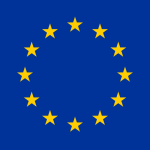18 Sep Enhanced Due Diligence for High-Risk Customers
Identifying high-risk customers and conducting thorough background checks is crucial to maintaining the integrity of financial systems. One of the most critical aspects of AML compliance is Enhanced Due Diligence (EDD) for High-Risk Customers. EDD ensures that businesses implement thorough investigative measures for customers considered at higher risk for illicit activities.
This article explores the significance of Enhanced Due Diligence, detailing its processes and why financial institutions must prioritise EDD for high-risk customers. We will also touch on the importance of AML training, particularly from certified providers like KYC Lookup, which offers comprehensive AML training programs accredited in the UK.
What is Enhanced Due Diligence (EDD)?
Enhanced Due Diligence (EDD) is an elevated level of scrutiny applied to customers who are categorised as high-risk. These customers often present a higher potential for involvement in money laundering, terrorism financing, or other financial crimes. Standard due diligence procedures, which may involve simple identity verification and background checks, are insufficient when dealing with high-risk customers. EDD ensures a more rigorous approach, which typically includes:
- Detailed background checks: Verifying a customer’s financial history, political exposure, and business affiliations.
- Source of funds verification: Establishing where the customer’s wealth originates to ensure it comes from legitimate activities.
- Ongoing monitoring: Regularly reviewing the customer’s transactions to identify suspicious patterns or behaviours.
Identifying High-Risk Customers
High-risk customers are identified through various indicators that flag their potential for financial misconduct. These indicators include:
- Geographic location: Customers from countries with high corruption rates or lacking strong financial regulations may pose a higher risk.
- Political Exposure: Politically Exposed Persons (PEPs), due to their positions of power and influence, are often classified as high-risk customers.
- Unusual Transaction Behaviour: Individuals or entities with erratic transaction patterns or large sums of unexplained funds can be considered high-risk.
- Complex Business Structures: Customers with opaque, multi-layered business ownerships may attempt to conceal illicit activities through legal entities.
For financial institutions, spotting these red flags is critical to initiating the appropriate level of due diligence. Companies must establish strict risk assessment protocols and internal procedures to flag and address these high-risk customers effectively.
The Importance of EDD in AML Compliance
Enhanced Due Diligence plays a vital role in ensuring that businesses adhere to Anti-Money Laundering (AML) regulations. Financial regulators worldwide, including the UK’s Financial Conduct Authority (FCA), the US’s Financial Crimes Enforcement Network (FinCEN), and international bodies like the Financial Action Task Force (FATF), stress the importance of applying EDD in riskier cases.
Institutions that fail to implement proper EDD measures face significant financial and legal consequences, including hefty fines, loss of reputation, and even the risk of criminal penalties. By conducting EDD on high-risk customers, businesses can mitigate the risks associated with money laundering, terrorism financing, and other financial crimes.
Steps Involved in Enhanced Due Diligence
Performing Enhanced Due Diligence involves several critical steps. Each step ensures the institution has a clear understanding of its high-risk customer’s profile and is monitoring their activities for suspicious behaviour.
In-depth Customer Verification
EDD begins with a thorough verification of the customer’s identity. This process goes beyond simply obtaining a photo ID or utility bill; it involves cross-referencing multiple sources to ensure the legitimacy of the information provided. For high-risk customers, this often includes verifying their business affiliations, past financial records, and links to politically exposed persons (PEPs).
Assessment of Source of Funds and Wealth
One of the primary goals of EDD is to trace the origin of the customer’s funds. This helps to ensure that the funds are not connected to illegal activities. Financial institutions must ask questions such as:
- Where did the funds originate?
- Are the funds from a country or jurisdiction known for lax AML controls?
- Is the customer’s wealth proportionate to their professional or business background?
By answering these questions, companies can gain deeper insights into the customer’s risk profile.
Ongoing Monitoring of Transactions
Unlike standard due diligence, EDD requires continuous monitoring of the customer’s financial activities. Regular reviews ensure that no unusual or suspicious transactions slip through the cracks. This ongoing monitoring often involves:
- Setting up automated alerts for large or unusual transactions.
- Conducting periodic reviews of the customer’s business and financial relationships.
- Reporting any suspicious activity to the appropriate authorities.
Comprehensive Risk Assessment
A key element of EDD is a full risk assessment of the customer, which includes evaluating all potential risk factors such as geographic location, business type, political exposure, and past financial behaviour. This risk profile helps institutions tailor their monitoring and reporting processes accordingly.
Why Financial Institutions Need EDD for High-Risk Customers
The primary reason financial institutions need Enhanced Due Diligence for high-risk customers is to protect themselves from legal liabilities and reputational damage. High-risk customers are more likely to be involved in illicit activities such as money laundering or terrorism financing, both of which could lead to significant penalties for businesses that fail to detect these activities early.
EDD also helps institutions stay compliant with AML regulations. Compliance is not just a legal obligation, but also a critical part of maintaining the trust and confidence of customers, investors, and regulators.
AML Training from KYC Lookup: A Key to Compliance
Staying compliant with AML regulations requires ongoing education and training for staff, especially those handling high-risk customers. This is where AML training from KYC Lookup becomes invaluable.
KYC Lookup, a UK-based, fully accredited AML training provider, offers comprehensive courses designed to equip businesses with the knowledge and tools needed to identify and manage high-risk customers effectively. Their training covers the fundamentals of due diligence, enhanced due diligence, and customer risk profiling.
With KYC Lookup’s AML training programs, institutions can ensure that their compliance teams are up to date on the latest regulatory requirements and best practices. Their programs are tailored to meet the specific needs of financial institutions, law firms, and businesses involved in high-risk transactions.
By incorporating KYC Lookup’s AML training into their compliance strategy, organisations can significantly enhance their ability to detect and prevent money laundering and other financial crimes.
EDD as a Pillar of AML Compliance
In conclusion, Enhanced Due Diligence for High-Risk Customers is an essential component of any institution’s AML compliance program. The need for EDD arises from the high risks associated with specific customers, who may be more prone to financial crime. The thorough investigation of these customers, combined with ongoing monitoring, ensures that businesses stay compliant with regulations and mitigate risks.
Institutions looking to strengthen their AML compliance should also invest in regular AML training from trusted providers like KYC Lookup, which equips teams with the necessary skills to navigate the complexities of enhanced due diligence and stay ahead of regulatory requirements.
By prioritising EDD and proper training, financial institutions can better protect themselves and contribute to the global effort of preventing money laundering and financial crimes.




No Comments